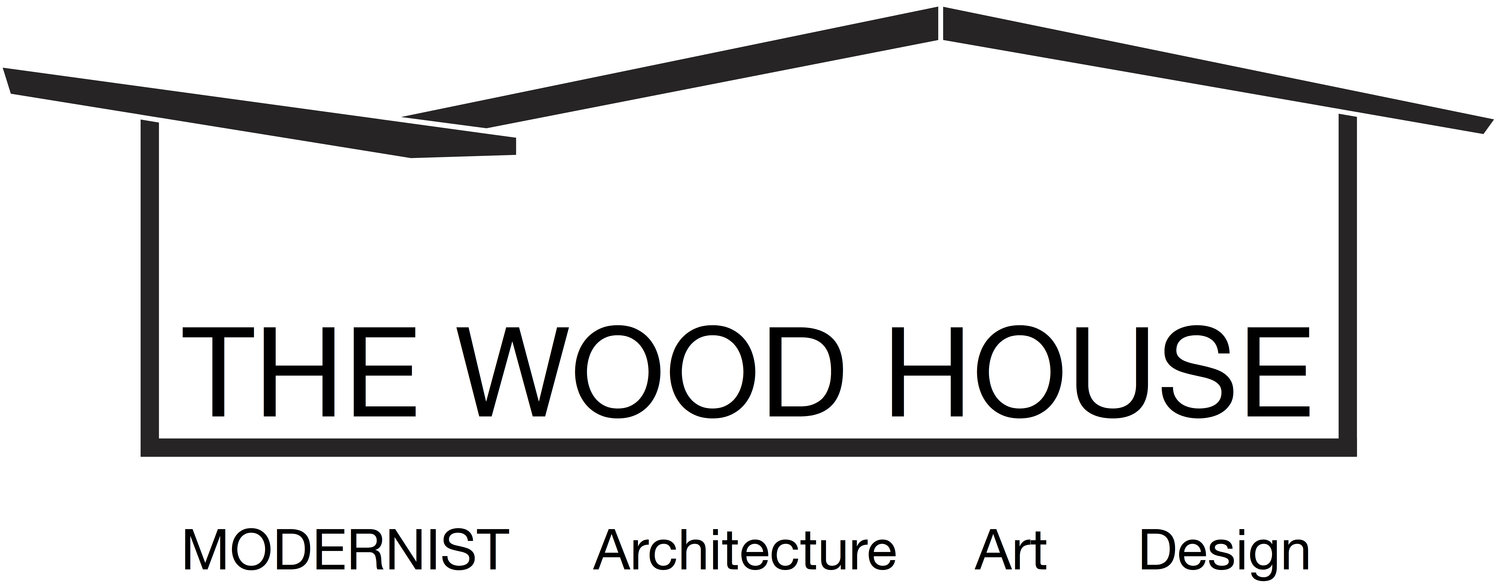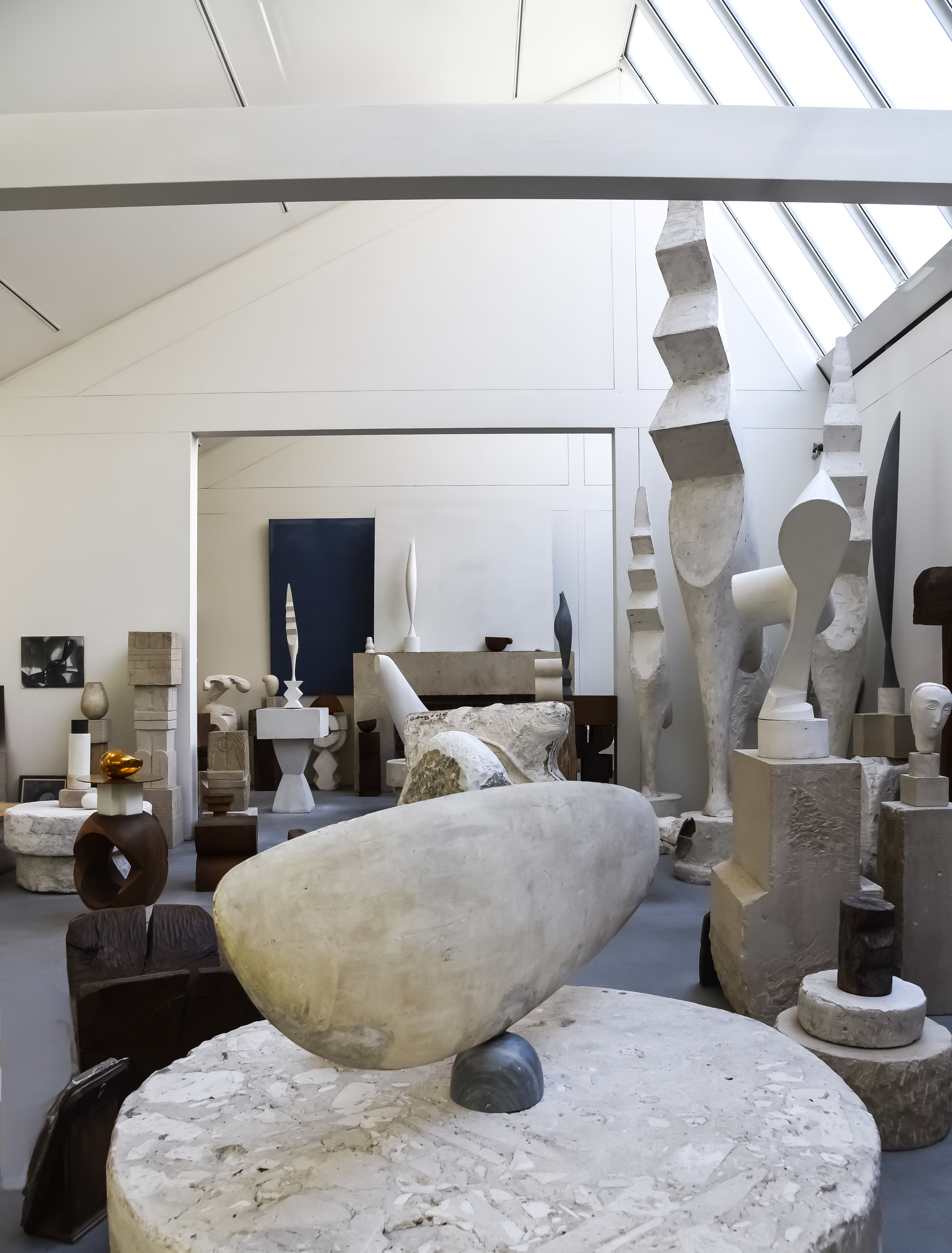Atelier Brancusi
/
A very abbreviated history of Constantin Brancusi, “The Patriarch of Modern Sculpture” before we move on to his atelier and its recreation in Paris, s'il vous plaît!
Brancusi, considered a pioneer of modernism and one of the most influential sculptors of the 20th century was born in Romania but made his career in Paris. Early on he was invited to work under Auguste Rodin, and did for a short time until he decided he needed to step out of the shadow of the world-renowned artist. “Nothing grows well in the shade of a big tree.” A well-known Brancusi quote about his reason for leaving Rodin’s workshop. Though his time with Rodin was short, it may have been critical in shaping Brancusi’s individual philosophy. There is a sharp point of departure between the two, not only in aesthetics, but process. Brancusi, worked directly with his materials introducing and mastering the technique of direct carving. A practice that would be taken up by artists such as Barbara Hepworth, Henry Moore and Isamu Noguchi in future generations.
Brancusi'S Studio at impasse ronsin - paris, 1955. Photo courtesy of paul kasmin gallery, ny.
brancusi's Studio at impasse ronsin - paris, 1955. photo courtesy of paul kasmin gallery, ny.
In 1916, Brancusi moved to an artist’s colony. A tucked away alley in Montparnasse known as Impasse Ronsin. He had already achieved his smooth, contoured sculptures - highly simplified forms free of ornamentation, here at Impasse Ronsin it would become his established practice. He first moved in to #8 and then to studio #11 in 1927. The same year he moved into his new studio, he took on a twenty-two year old Japanese-American apprentice. That apprentice’s name was Isamu Noguchi. Post war the alley saw a resurgence. A new group of vibrant artists began to settle in the 1950’s. By this time his atelier had grown across five lots. He had connected all five - the studio and living quarters, leaving the biggest space for exhibiting his pieces. He had already stopped making new work, his last sculpture completed in 1949. The sculptor now focused on the studio as a work of art. Brancusi considered the relationship between sculpture and space of crucial importance. Near the end of his life he focused solely on their positioning in the studio. This became so fundamental to him that when he sold a work he would replace it with a plaster copy so as to not destroy the unity of his groupings.
Atelier Brancusi was the heart of the Post War art scene on Impasse Ronsin and Constantin himself, nearly two generations older than these young artists, the caretaker of both it and them. Many have accounts of time spent in his studio as friends or students, sometimes both. Duchamp was a regular visitor, collector and friend who brought many buyers to the atelier. Edward Steichen, his friend and neighbor taught him how to take photographs. After that, Man Ray. William Copley, the duo Les Lalanne, Max Ernst, Yves Klein, Niki de Saint Phalle, Robert Rauschenberg.. The list of important artists to come out of or have passed through Impasse Ronsin are too many to name.
In 1956 Brancusi decided to leave his studio and all of the works installed there to the French State on the condition that the studio be preserved “as is” like a museum piece. He wanted to ensure the preservation of Impasse Ronsin. As long as Brancusi was alive no one would dare touch the alley the artist’s called home. It is said that his definition of “as is” was meant for the whole of Impasse Ronsin, to protect the artist’s alley as it had been threatened for demolition once before in 1946.
atelier Brancusi reconstruction by renzo piano, paris
brancusi's Work area, recreated from his own photographs
After Brancusi’s death, Impasse Ronsin was condemned and the 144 sculptures, plasters and drafts were moved to a room in the National Museum of Modern Art, then housed in the Palais de Tokyo. Today, Atelier Brancusi sits on the Beauborg Plaza in front of the Centre Pompidou. During our recent trip to Paris we visited the present reconstruction of Atelier Brancusi built by architect Renzo Piano. From the time he moved into the Impasse Ronsin in 1916, the sculptor very carefully documented all of his work. This provided the blueprint for the reincarnation of the studio. Although the atelier is presented inside a museum, all of the works behind glass, it still evokes a feeling of what it may have been like at #11 Impasse Ronsin. Seeing the sculptures placed just as he left them, along with his own documentation and photos you can almost imagine him working or setting a sculpture just so.









